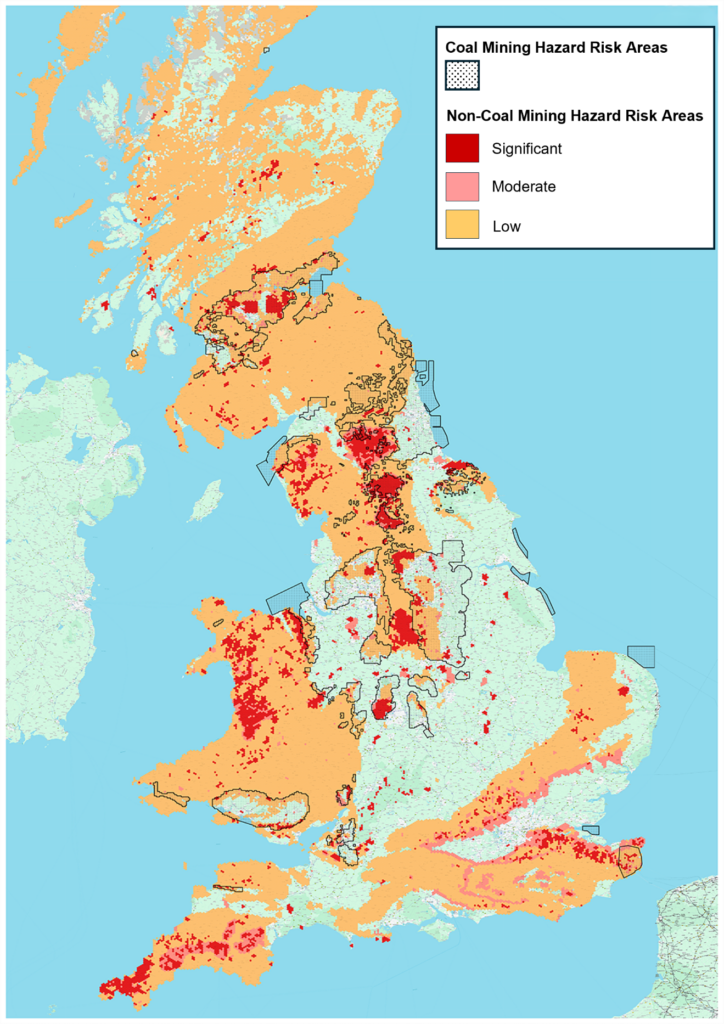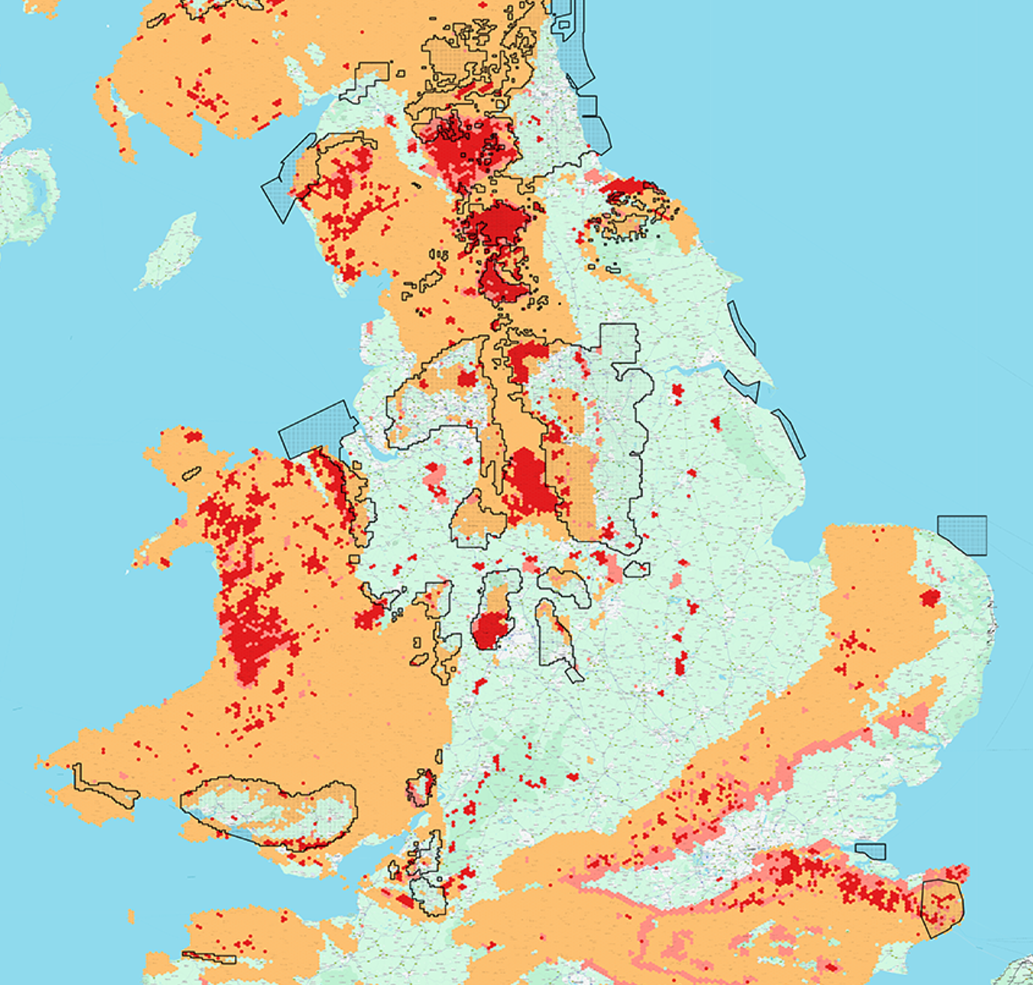While coal mining is often the primary focus when discussing the UK’s mining history, there is a rich history of other types of mining that have significantly impacted various regions across the country. These mining activities have not only shaped the landscape but have also left a lasting legacy that continues to influence land use and development.
The map below shows non-coal mining related hazards as plotted by the British Geological Survey (BGS). The colour coding relates to whether the hazard is classed as significant, moderate or low. We have also overlain the coal mining hazard areas too (as discussed in detail in the previous article). The overlap in some areas of the country reflects the relationship between coal and some of these other resources, e.g. Ironstone occurrence in Carboniferous rocks.

British Geological Survey /Coal Authority materials © UKRI 2024
This map is a crucial tool for identifying areas that may pose risks due to historical mining activities. By understanding these hazards, developers and landowners can take proactive steps to mitigate potential issues, ensuring safer and more sustainable developments.
Going forward in this series, we will explore in more detail the mining of different resources in the UK, including:
- Ironstone
- Limestone
- Chalk
- Evaporites
- Metals and Vein Minerals
For each resource, we will delve into what the materials were used for, the types of rocks they occur in, and where in the UK they can be found. Additionally, we will provide an overview of the mining methods used to extract them. This comprehensive look will highlight both the historical significance of these resources and the ongoing challenges they present.
Importance for Modern Development
While some non-coal minerals were mined on a mass scale and still are today, many haven’t been mined for hundreds of years, were mined on a small scale, were poorly regulated and recorded, if they were regulated or recorded at all. Quite often, there will be localised records and books; however, these are often decades old and out of print so are difficult to source.
These historical mining activities present various challenges for modern development, including ground instability, contamination, and environmental impact. By recognising the geological associations and historical contexts of these mining activities, developers and landowners can better assess potential challenges and employ appropriate mitigation strategies in historically mined areas. This proactive approach ensures that new developments are safe, sustainable, and respectful of the historical legacy of mining in the UK.
If you have any development or construction projects that may be impacted by historical mining workings and hazards, then please get in touch to find out how we can help save both time and costs. Please use your main point of contact at GRM or for new enquiries email richard.upton@grm-uk.com or call 01283 551249.


